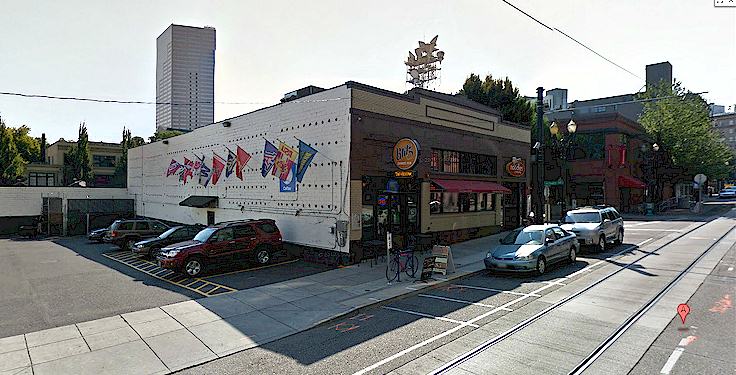
Radio Specialty Manufacturing Co.
and the
1940 Grazing Service HF Transmitter-Receivers
Background
Radio Specialty was a Portland, Oregon based small company which started sometime in the mid-1930's manufacturing primarily forestry related communications equipment, if not exclusively. Their first products have been documented on other websites and in publications such as Radio for the Fire Line and internal U.S. Forest Service radio history documents. One of the most famous products was the Type SPF radio made for the U.S. Forest Service. Click here for information on that equipment. The company also manufactured quartz crystals and published a catalog describing those products alone. It is not known if the company published a catalog of its radio equipment.
At the start of WWII the company was occupying a building which still stands in downtown Portland, Oregon at 122 N.W. 10th Avenue, as shown below.

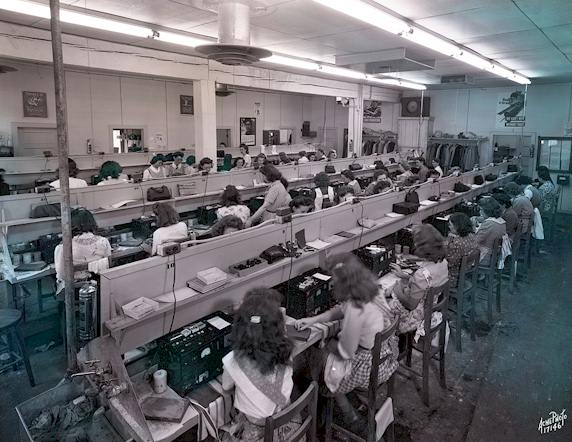
After WWII the company made products for users other than forestry, and in the mid or late 1950's began making their most famous product, an FM deviation measurement scope which was a wonderful piece of test gear found in the best 2-way radio shops of the time. The FM equipment made by Radio Specialty in the 1950's and 60's seems to have been restricted to hand-carried VHF FM portables and forest service lookout tower base stations (which used essentially the same chassis as the portables did.) The portables were of beautiful if dated construction, using stainless steel chassis and subminiature wire-lead tubes plugged into sockets.
The company was out of business by 1983, its last corporate address as registered with the state (2013) was the forlorn looking old house shown below at 525 SE Lincoln in Portland. It is believed that the company was mainly a victim of failing to keep up with changes in technology and that the principals were all advancing in age or already gone by the 1980's. To the best of my knowledge, the last product made by the company was a portable VHF FM high band repeater on forestry frequencies, some of which were purchased by the California Department of Forestry in early 1977 in response to the communications difficulties experienced during the famous central California "Marble Cone" fire.
The last manufacturing address for the company was 2023 SE 6th St., Portland, close to the house shown above. It is now occupied by an industrial supply firm:
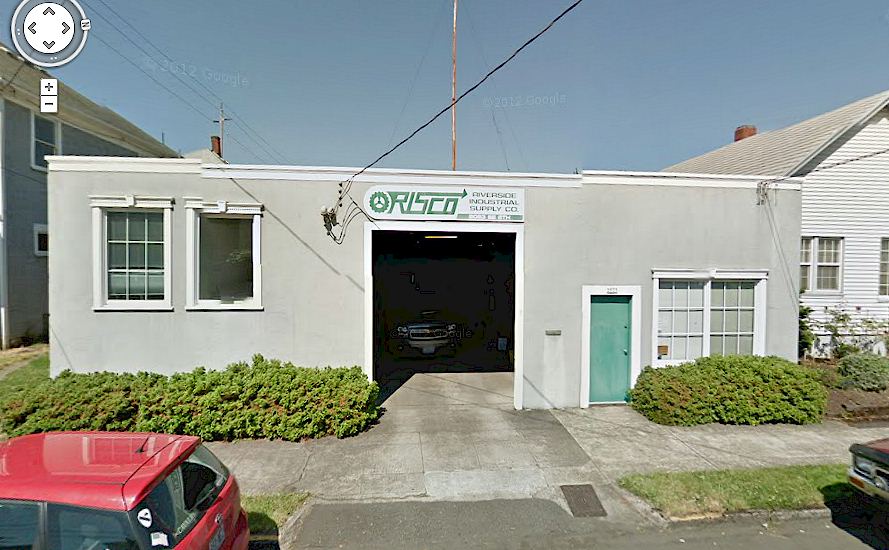
One interesting product made by the company beginning in 1940 and presumably during the war years is the small high frequency transceiver shown below. So far I have these two examples, and although they appear to be the same externally, they are actually quite different. I have no documentation at all and am in the process of reverse-engineering at least the power wiring so that they can be used. Note that in equipment like this, in this day and age, you can expect that all paper capacitors will be bad as well as the electrolytic capacitors, and that some of the high value resistors will have drifted far above their marked values. Both versions of this radio seem to operate in the 2.5-3.5 MHz region.
CCC Radio Service Type D Two-Way Radio
Information on the radio nets used by the Civilian Conservation Corps is scarce to nonexistent. Even more scarce is information on the Grazing Service, a program staffed by the CCC which apparently saw the CCC men seeding fields, building gates and trails and otherwise physically administering the details of the Grazing Service program, which leased national forests and federal lands to ranchers for a fee. The CCC Grazing Service seems to have had an elaborate and reliable radio communications system, consisting of CW nets on the 2-3 MHz range. Based on the markings on the equipment it appears that the CCC Grazing Service operation used different nets and frequencies from the standard CCC organization. Most of the CCC camps were located far from established civilization and radio was generally the only way to establish communication unless there was a field telephone line. Note that the CCC was disbanded in 1943 and the grazing service was taken over by the Department of the Interior and eventually the Bureau of Land Management.
The set below was obtained through the kindness of friend Rich Ferranti, W6NIR, who I believe acquired it from the original amateur user. It came complete with the accessory DC power supply, intended to run from a 6 Volt automobile storage battery, as might have been the only source of power available in a remote location. The AC power supply is built-in, however all voltage inputs and outputs are brought out to a 15-pin Cinch Jones connector on the rear apron so that the power connector wiring determines which method of power will be used. Another radio set which used a similar scheme was the Gonset Communicator series of the 1950's.
This CCC radio is CW only, as mentioned above, although the receiver can be used without the beat frequency oscillator in order to receive regular AM voice signals. This example was modified at some time to have a crystal socket on the front panel, possibly by the CCC itself. Otherwise it is original. Investigation of the present tuning settings of the transmitter circuits suggests it was last used on a frequency just above 2.5 MHz. Transmit-receive switching is accomplished via the multi-contact lever switch on the upper left panel. Interestingly, this switch has a center-OFF position, essentially useless in a set with standard filament tubes, but probably recycled from parts stocked for the earlier battery operated SPF US Forest Service pack radios also made by Radio Specialty.
The accessory DC power supply consists mainly of two Mallory Vibrapacks placed in a common housing with some extra filtering components and relays.
The power output is probably about 7-8 Watts, CW, from a 6A6 power tube. The receiver is a tunable superhet and uses a variety of octal and Loktal tubes. Radio Specialty was an early adopter of the Collins Tuner circuit, later commonly referred to as the pi-network. It is presumed that the CCC nets took advantage of a phenomenon discovered by the US Forest Service lab in the 1930's, namely that satisfactory communication over distances of 10-100 miles could be had on the 3 MHz band by making use of antennas with a largely "straight up" radiation pattern, which decades later would be called NVIS (near vertical incident sky-wave propagation.) In that regard, the antenna used was an off center fed Windom, which featured a single wire feedline. Hence the single antenna binding post on the front panel and the lack of a ground stud or binding post. This is the same arrangement as on the earlier SPF radio manufactured for the US Forest Service for use on the same frequency range.
The only transmitter control available to the actual user is a back panel "Final Tuning" knob which is connected to the plate tank tuning capacitor, and basically one adjusts the plate tuning for a meter "dip" in the PLATE MA position. The internal variable capacitors adjust the loading of the pi-network output circuit and the coarse final tuning setting and are normally adjusted at the shop and pre-set. Interestingly, the BFO frequency of the receiver is internally fixed and not adjustable by the user.
This set weighs about 20 pounds, far lighter than the AM voice version below.
Information on the CCC's radio nets and systems is sought and will be added here, please help if you can add anything!
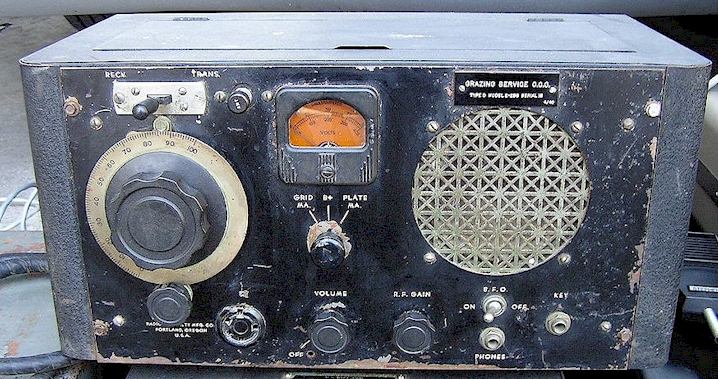
Close-up of nameplate:
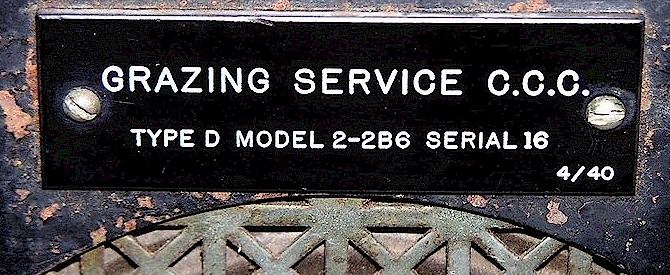
Interior:
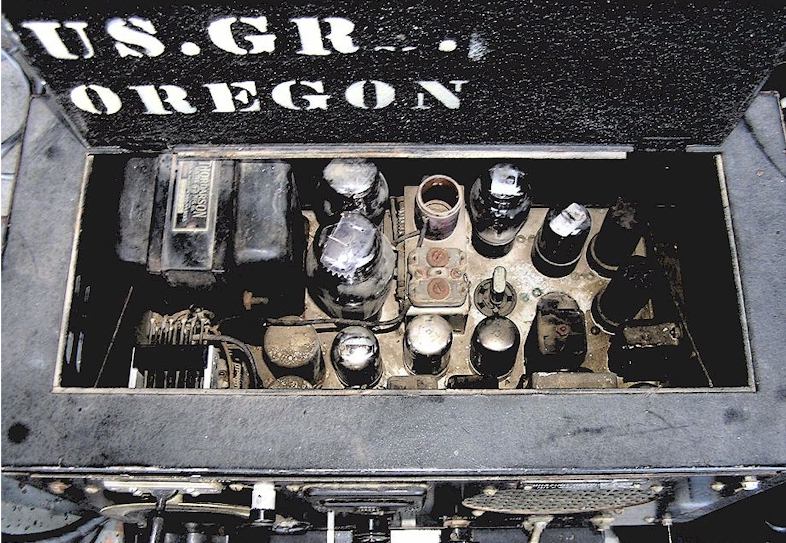
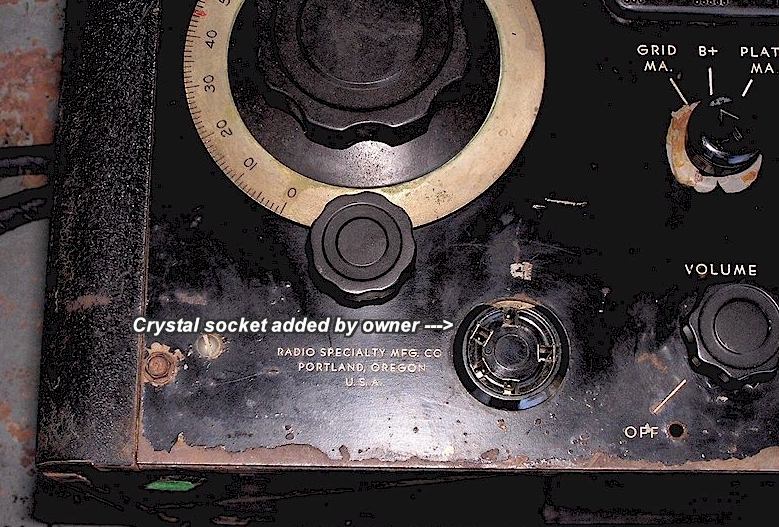
ACCESSORY DC POWER SUPPLY
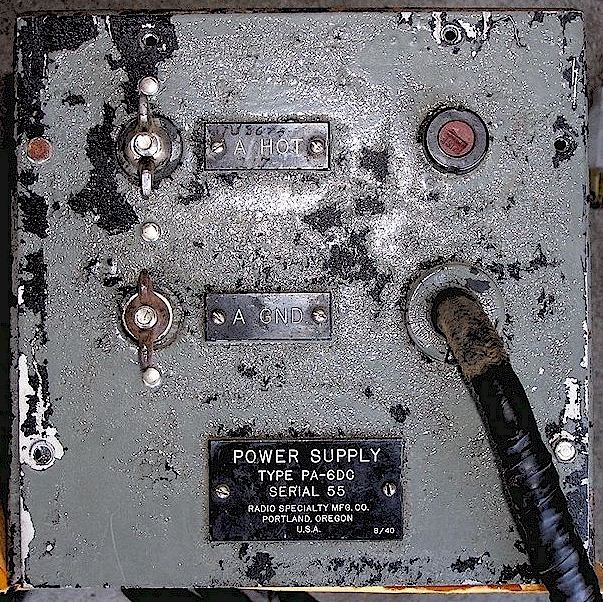
Second Version
U.S. Grazing Service Type D1 Two Way Radio
This version was acquired on eBay from a seller in Colorado in February, 2013 and is unfortunately missing the nameplate from the front panel so that I was initially unable to determine the model number or the intended user. At first glance it appears the same as the above set, but a closer look shows that the chassis layout is vastly different, as well as this set having AM voice transmit capability. The chassis layout is almost "backwards" compared to the CCC set above, with the power transformer on the opposite side. The tubes are all Loktal other than the transmitter power amplifier (an RK 34) and power supply rectifier (a 5Z3.) Unlike the CCC set above, some kind soul has printed the tube types in rubber stamp ink next to the sockets so that we know what goes where. This set has different screw holes where the nameplate would have gone, suggesting that something other than CCC was the user, especially since it is believed that all CCC radio nets were done on telegraph (CW) rather than voice. This set is much cleaner than the CCC version and all the tubes tested as new, suggesting that it saw little use. There is evidence of a decal once being on the set, which has been scraped off some time in the past. Some work with a grid dip oscillator showed that this set too was last used on a transmitter frequency near 2.5 MHz. The components used suggest that it was manufactured later than 1940, during a time when wartime restrictions on parts were in effect, as the variety of electrolytic capacitors is evident and a chassis mounted "FP" style filter capacitor is marked "Delco Radio" and only a single section of its three sections is actually used.
The set is plate modulated by a pair of 7C5 tubes. There is a "coarse" PA tuning capacitor located underneath the two PA loading compression trimmer whose tuning shaft can be moved with needle-nosed pliers to put the PA tank circuit initially within range, the "fine" tuning being done with the rear panel plate tuning capacitor.
Note that the top cover is secured by a spring loaded thumbscrew, while the CCC set has a simpler lid with no fastener. Also note that the panel of the CCC set has no transmitter filament shutoff switch and has the key jack on the front panel. Also, the CCC set uses a front panel antenna binding post, while this one has a rear dual insulated binding post arrangement. It would be tempting to presume that this one has a balanced line output, but recall that Radio Specialty was a fan of the Collins pi-network, and in fact we find that even though both studs are insulated, one is grounded and this is the same pi-network unbalanced output as on the set above.
This set is heavier than the CCC radio, being about 33 pounds.
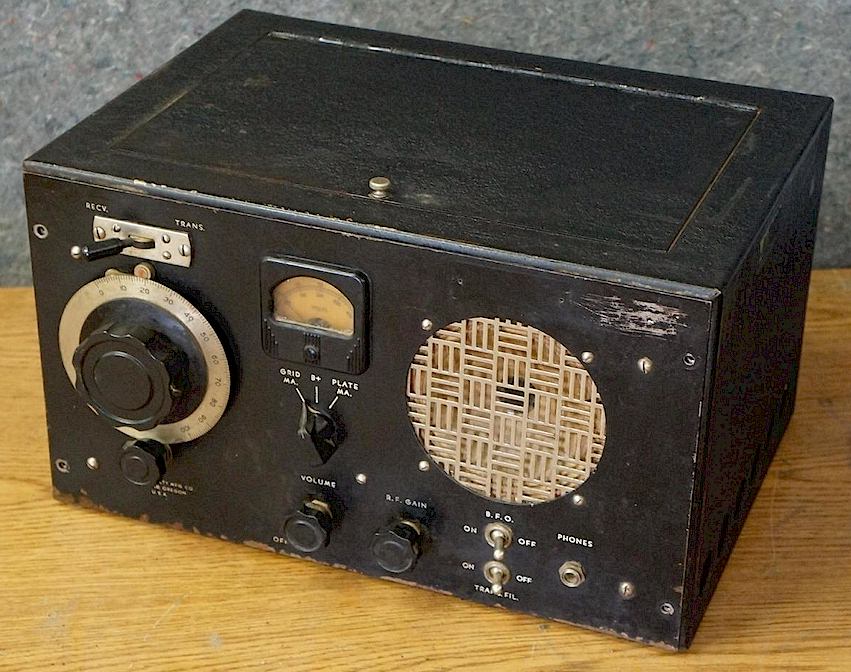
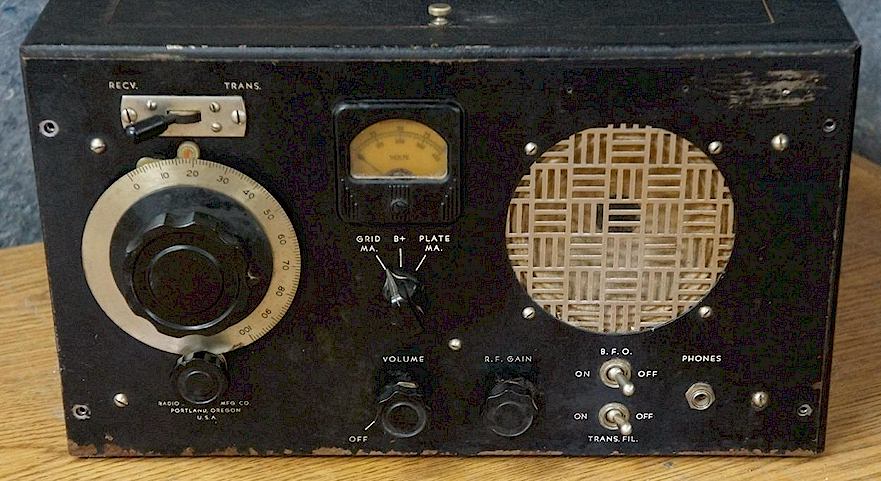
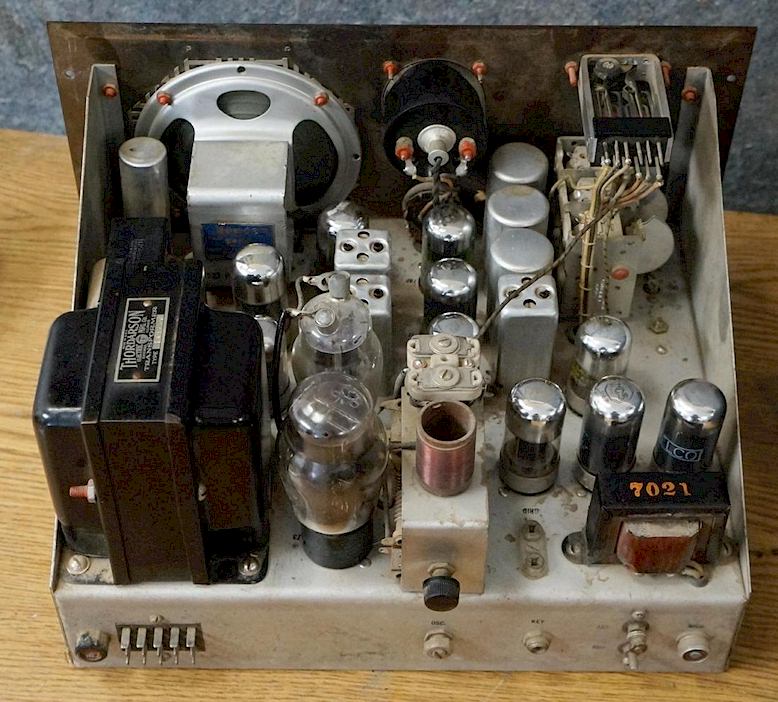
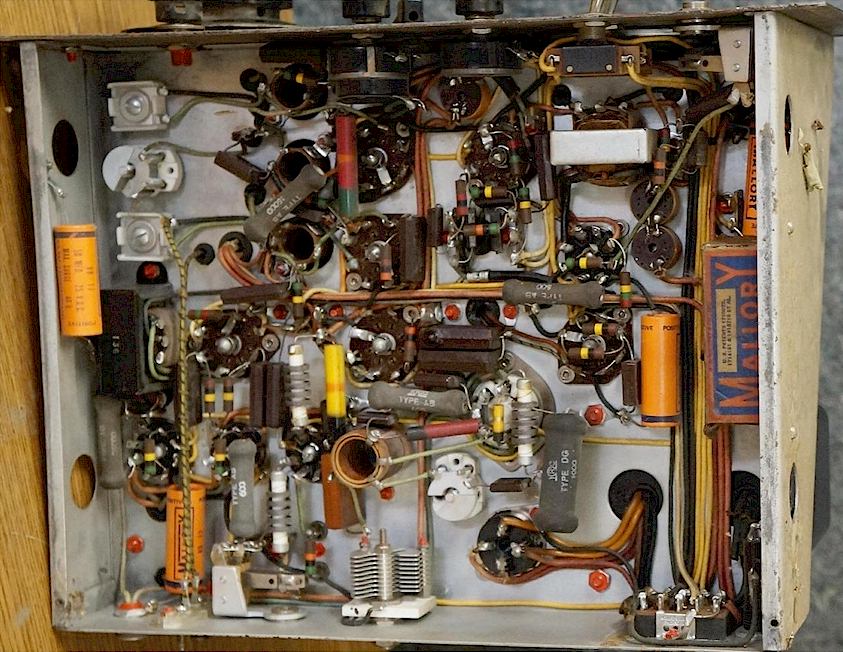
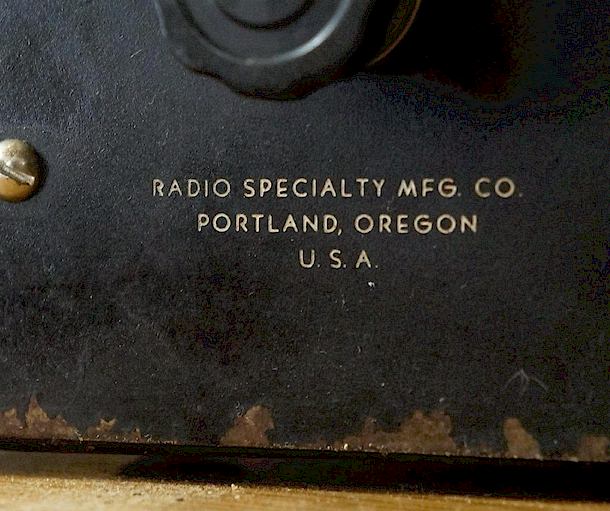
Thanks to K9VXN, who found other sets and kindly sent me photos, I learned that this second model is from the U.S. Grazing Service, not the CCC. The Grazing Service was the parent agency in charge, and the CCC was used to do the basic work involved in making gates, roads, fences and so on for rental grazing on public lands. The CCC nets were all CW while Department of the Interior employees on the other hand were not trained radio operators and would have needed to use AM phone for communications. Hence the totally different radios. The CCC Grazing Service section was gone by 1941 due to defunding and the war, but the Grazing Service per se continued until 1946 as the "US Grazing Service" when it was absorbed into the new Bureau of Land Management (BLM.) Where things get confusing is that the CW set above says "Grazing Service, CCC" and is dated 4/1940, while this set says "U.S. Grazing Service" and is dated 11/1940. The CCC was demobilized around late 1940 and the Grazing Service taken over by the US Grazing Service, which appears to have been administered by the US Department of the Interior.
Here is what the nameplate should look like:

I had thought that the crystal socket on the CCC radio front panel had been added by some ham owner, but here it is on this version as well. Apparently these were added in the field by the original users:
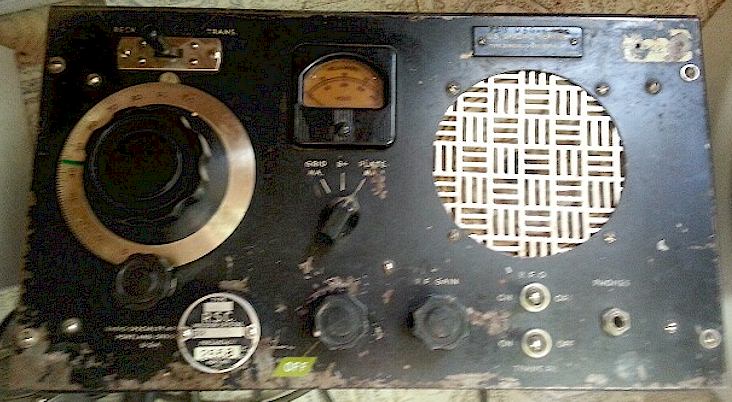
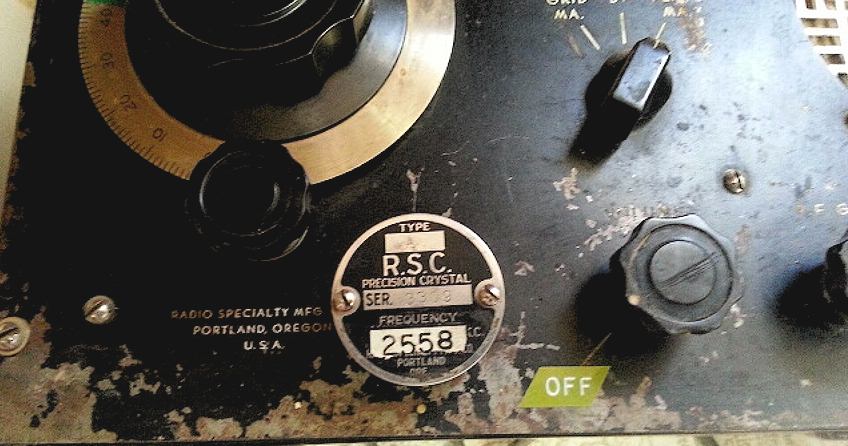
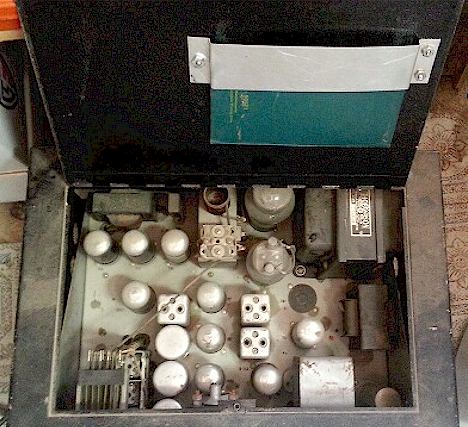
Note the interesting microphone which seems to be made from a Western Electric F1 carbon telephone cartridge:
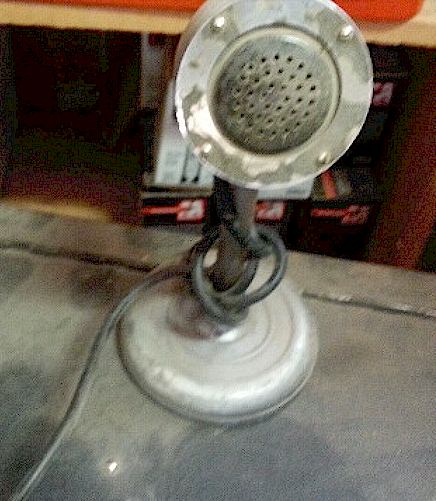
YET ANOTHER VERSION
This is another version found by Richard Ferranti, W6NIR, which is strange in that it is tagged as a Type D Model 2-2B6 yet has a squelch control and is the AM-CW model, leading one to believe it should be labeled as Type D1 Model 2-2B6. That it has AM suggests that the CCC had lost enough CW operators to require this (the CCC nets were originally all CW.) Based on the serial number it appears that sometime after April 1940 the Type number change to Type D1 and at that point the serial numbers started over again. It is not known why an earlier set has a squelch control while a later one does not. Also, sometime between April and November 1940 the Grazing Service radios ceased to be marked "CCC."
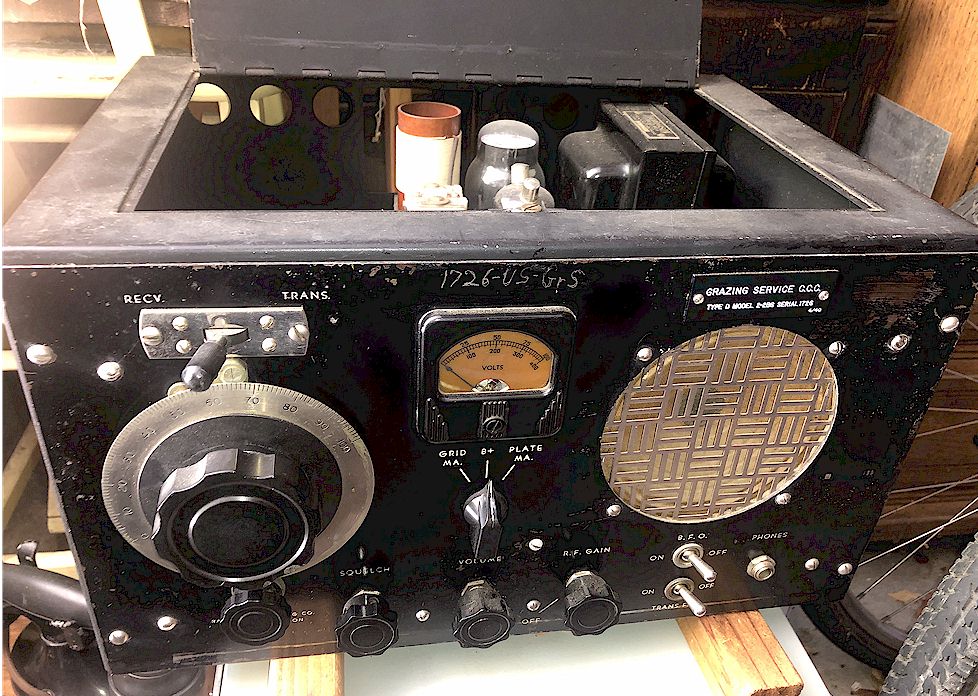
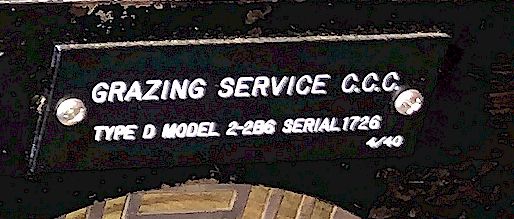
At least one of these Type D or D1 radios in addition to this one was sold on eBay in the past few years. That one was stenciled "KQTX" inside the lid, which may have been an early CCC callsign before it was assigned to a postwar AM broadcast station.
If you have one of these radios or want to share info, please contact me! A number of us would be eternally grateful if we could ever find the service manual or even a schematic for any of these!
ORIGINAL PUBLICITY PHOTOS FROM RADIO SPECIALTY'S ARCHIVES:
The AM Phone version. No key jack on front. Toggle switch by meter not present on production examples seen. This version has a squelch control next to the tuning knob.
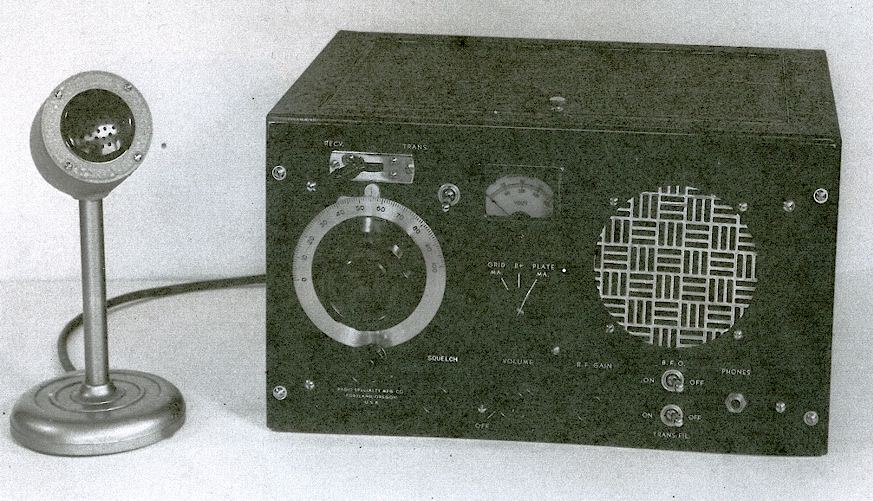
The CW Version, TYPE D
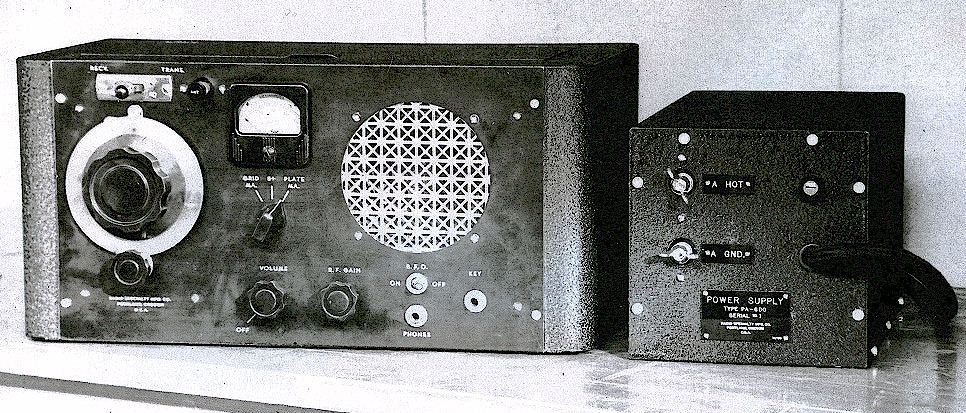 Thanks
to John Frye for these photos!
Thanks
to John Frye for these photos!
Note that these prototypes are slightly different from what was actually supplied. As mentioned above, the Type D-1 with the microphone has an oddly unmarked toggle switch next to the meter, while the other has what appears to be a binding post for the antenna on the front panel next to the Transmit-Receive lever switch, not present on production models.
OTHER TYPE D ACCESSORIES
There were apparently assorted accessories in addition to the DC power supply shown above. An auction of an estate in Idaho contained a "Line Adjuster" unit appearing to have been made at the same time as these radios and with the same style nameplate. It appears to have been nothing other than a small Variac in a sheet metal box, and intended to compensate for the wide variations in AC voltage found on extreme-rural power lines in the 1940's.
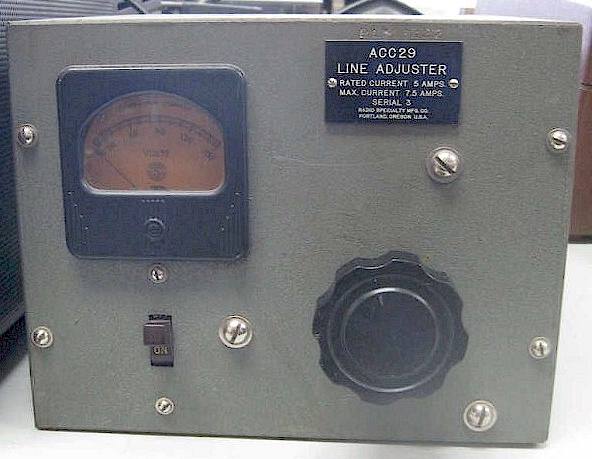
GRAZING SERVICE TYPE F Model 2
This Radio Specialty transmitter-receiver appears to have been produced later than the above models and after the Grazing Service was taken over by the Department of the Interior. It is quite a bit larger and may have been the fixed base link to the sets above. This particular set was seen at the 2016 Military Radio Collectors' Group flea market in San Luis Obispo, California.
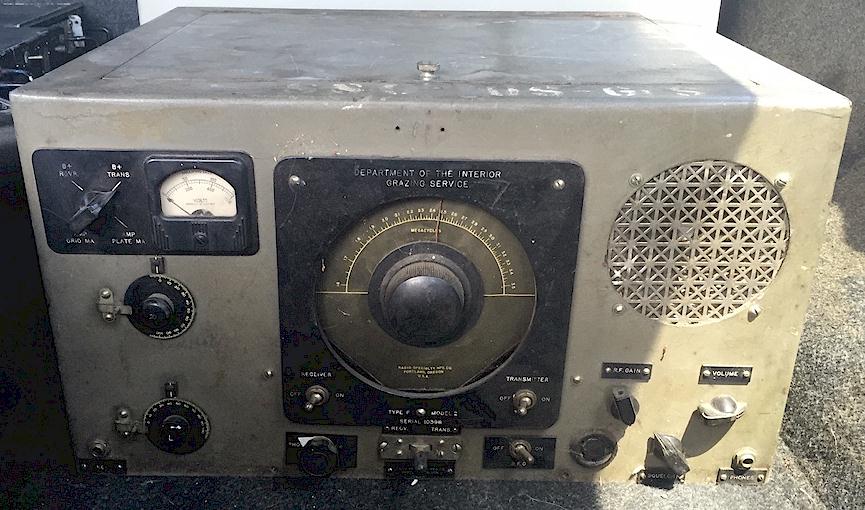
BORROWED SPF Radios
The Grazing Service, after the CCC was disbanded, as a division of the Department of the Interior, also adopted the Type SPF forestry radio in use by the US Forest Service, and placed their own nameplates on them. The example below was seen on eBay in October, 2020, unfortunately missing its speaker and microphone components inside the lid:
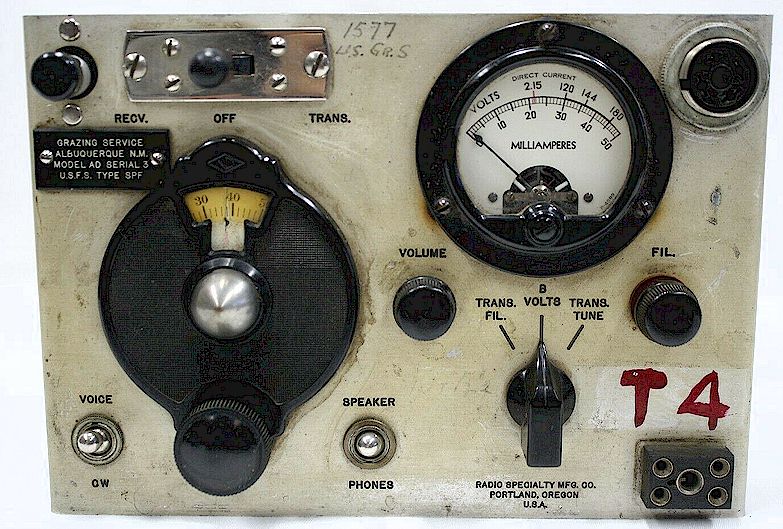
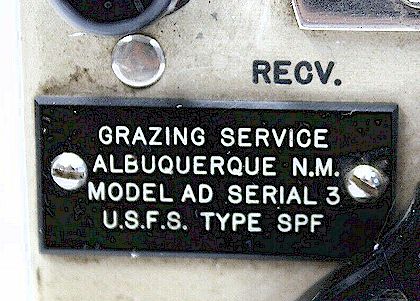
I would like to hear from anyone with information on the CCC's radio nets and equipment, before this information is lost forever.
Contact me at: Geoff @wb6nvh.com
Ver. 1/06/2024 ęGeoffrey C. Fors, 2013 All rights reserved.